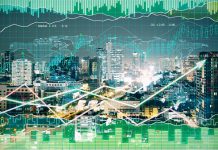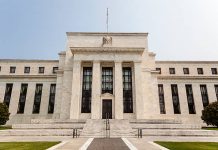American markets closed the trading session on Thursday with a broad decline. Futures on the S&P 500 lost more than 2.5% on Thursday and lost another 0.7% before the European session. Japanese indices are also in decline, sliding back from 8-week highs on Nikkei225. Chinese markets, like some European markets, are closed today.
The strengthening of many markets last month was a record for many years, despite decline overnight. Investors have bought back assets that declined sharply during the collapse in March. Some stocks have become new stars of the market, such as Zoom, Gilead Sciences. Other companies, by contrast, are suffering in the new reality.
It was a shock for the markets to see Shell’s 66% dividend cut, which was the first cut in 80 years. Shell was the largest dividend payer in the FTSE100, which is why its stocks were part of many pension fund portfolios . Yesterday, Shell stocks lost 11.7%, sharply turning to the decline and going into negative territory at the end of the month. The head of the company associated this decision with a high degree of uncertainty.
However, this is not much of a sign of an individual company’s or the energy sector’s weakness. Very likely, soon we will witness similar steps from other dividend aristocrats, companies that have been methodically paying and rising dividends for years. The whole system of dividend portfolios has been jeopardized, but the “growth” companies are suffering too. In March and April, we saw a particular hype around companies like Netflix or Zoom. However, now investors are increasingly wondering how viable their business model is in the face of months of decline in personal income and business destruction.
Markets are also largely deprived of another supporting factor – the shares buybacks. Now, it is another way for the business to save working capital – to reduce the buyback from shareholders. IT giants, which have vast amounts of cash, used this method actively earlier. Companies preferred to buy back their shares rather than pay dividends, which spurred the stock price, attracting more public attention. The shares that will be offered to the public for buyback could sharply lose in the dynamics.
Surviving a couple of weeks, or even a month, almost without leaving home – this is not as much of a problem as a long-term change in the spending pattern when people maximally cut all non-vital expenses by turning their eyes to low-margin goods. The same change in preferences applies to stocks. People have rushed to buy cheaper stocks and indices, but as unemployment rises and income falls, they will have to sell them to survive.
All of this leads us to believe that even with the positive momentum in the coming month, we can hardly expect a further strong rebound of equities that we had seen since 20th of March when the S&P 500 returned 70% of its collapse of the previous month.
In 2008 it took more than a year for the markets to recover their losses after the acute phase of the debt crisis. At the end of 1929, a 40% collapse was followed by a 25% rollback and then followed by two years of downward dynamic, which depreciated stocks by more than 80%.














